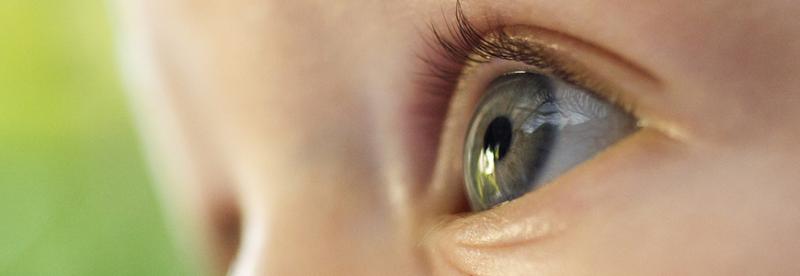
Researchers from the Duke Pediatric Retina and Optic Nerve Center (DPROC) recently established normative data on global peripapillary retinal nerve fiber layer (pRNFL) and macular volume and thickness values for children ages 0 to 5. Prior to this study, these data were not available for children younger than age 3, allowing for uncertainty in terms of normal progression in patients whose eyes are still rapidly developing in the first few years of life.
Two prospective studies, recently published in The American Journal of Ophthalmology and Ophthalmology, used optical coherence tomography (OCT) to describe normative values of pRNFL and macular volume and thickness in young, healthy, full-term children following general anesthesia for an unrelated procedure (e.g., strabismus or oculoplastic procedures). The team performed automated segmentation of the pRNFL and retinal layers using Spectralis HRA+OCT with Flex module (Heidelberg Engineering GmbH, Heidelberg, Germany) and Envisu (Bioptigen, Inc., Durham, NC) followed by manual correction.
Mays A. El-Dairi, MD, a neuro-ophthalmologist at Duke and senior author of the study, explains that because the growth of the eye between ages 0 and 3 occurs at a faster rate than between ages 3 and 18, data from older children cannot be extrapolated readily without the findings from these two studies “Physicians who care for children with glaucoma or another optic nerve disease can use these norms to compare what is normal in this age range,” she says.
A third study published by the same team in the Journal of the American Association of Pediatric Ophthalmology and Strabismus also looked at the reproducibility of the OCT data with growth from ages 3 to 18. El-Dairi says the results were very promising because the pRNFL layer does not significantly change with age or axial length. “These findings show that you can trust the data for children as much as you trust it in the adult world,” El-Dairi says. “However, if you see a change in the thickness of the RNFL by more than 5.5 μm, that would be indicative of a true progression. Anything less than that is the variability of the device, which is as reliable as you can get.”
El-Dairi notes that the DPROC team of highly specialized ophthalmologists is focusing on imaging the optic nerve in the retina in children and analyzing its effect on neurologic, pediatric, and intellectual development. In addition to El-Dairi, the team is composed of pediatric ophthalmologist Sharon Freedman, MD, and pediatric retinal specialists Cynthia Toth, MD, and Lejla Vajzovic, MD.
Article first appeared in Clinical Practice Today